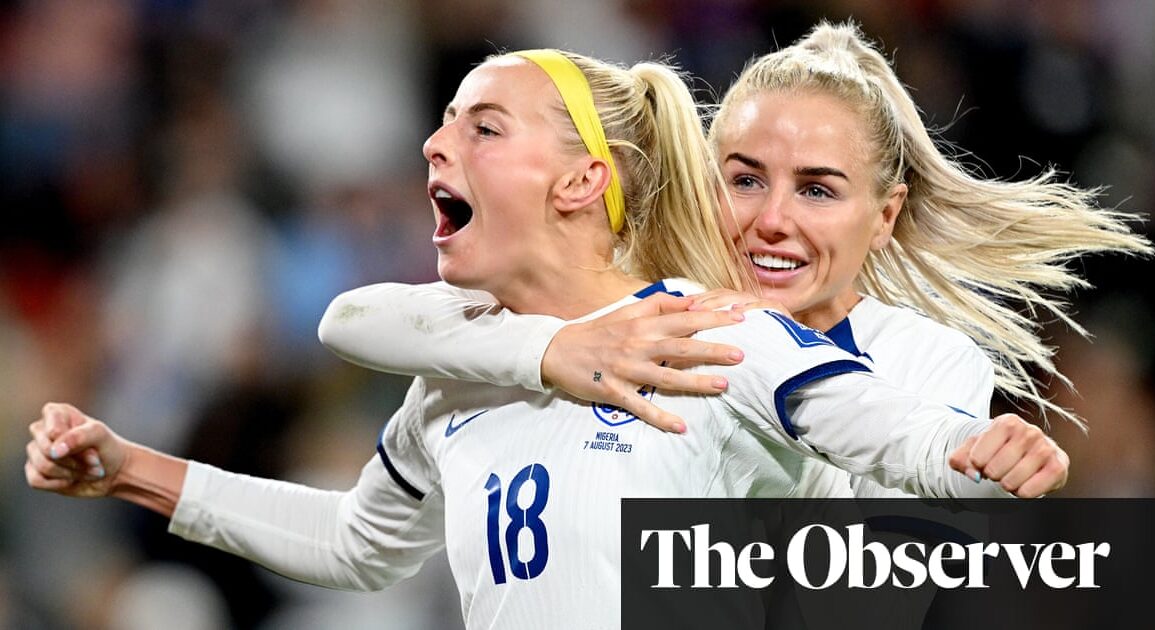
Reaching the Women’s World Cup final on Sunday is, of course, a massive achievement for England, writes Lauren Cochrane. But the team also have another important distinction to enjoy – they have helped make the humble ponytail the hairstyle of the summer.
Celebrating Alessia Russo’s goal on Wednesday against Australia, ponytails swung from the heads of most of the team – from Russo herself to fellow goal scorers Lauren Hemp and Ella Toone, as well as Chloe Kelly, Georgia Stanway, Alex Greenwood and Rachel Daly.
While the hairstyle is no doubt a practical measure to ensure hair is kept away from the face while playing football, the ponytail has taken precedence over equally serviceable buns and shorter hair during this tournament.
The fact that it is the hairstyle also worn by busy women across the world everyday has helped some of those watching identify with the players.
“The ponytail is a feminist symbol,” said Jacqueline Kilikita, acting beauty director of Refinery29, a US-based lifestyle website. “It indicates power and confidence – showing your face to the world and getting things done in style.”
The England team are not the only template for the ponytail this summer: Margot Robbie as Barbie wears a high ponytail and has inspired others to try the same look.
There have been more than 132m views of videos with the hashtag #barbieponytail on TikTok, and Pinterest has reported that searches for “Barbie ponytail” went up 190% from January to April.
“Sport and Barbie could be seen at opposite ends of the spectrum, but a blond ponytail is fusing the two together in a very satisfying unity,” said Tom Smith, hairstylist and trend forecaster.
If the style had previously been seen as only for those with Caucasian hair, it has been embraced by women of colour this summer. Black women on TikTok have gone viral with their takes on the Barbie ponytail.
In the England squad, star striker Lauren James, who was still suspended for last Wednesday’s game against Australia, also wears a ponytail style with her textured hair.
“It’s more popular than ever and great for those who prefer a lower- maintenance hairstyle that requires little to no styling,” said Tina Farey, the editorial director of Rush, a hair and beauty company. “Although simple, it still looks chic and classy.”Ponytails have a long history, dating back to ancient Greece, and taking in soldiers in the 18th century, French film star Brigitte Bardot in the 1960s and Janet Jackson and Madonna in the 1990s.
Kilikita said that the recent ponytail revival is part of a wider trend for looking back. “I think the ponytail’s comeback has been a long time coming, considering our love for nostalgic hairstyles,” she said. “I associate it with my school days.”
It has, she added, “usurped the messy 90s bun as the hairstyle of the summer”.
To achieve a ponytail worthy of the England team, Smith recommends hair that is not freshly washed and adding dry shampoo. “An easy hack I teach my clients is to do it in two stages: first, just [put up] the hair over your crown in a ponytail, then join up the remainder,” he said. “It gives loads of extra volume and allows you to pull out the edges, getting it less flat to your head without making the ponytail slip.”
As for those in the England team, Kilikita has a theory on how their ponytails stay in place: “I think it’s a good hair elastic – or a hair bungee, a professional hair tie enlisted by the very best hairstylists – a large paddle brush and lots of gel.”








